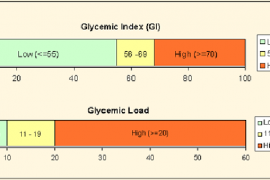Sugar is the main culprit behind diabetes, which patients are told to avoid. Its evil twin, salt, has a role to play in diabetes too. Although salt does not affect your blood sugar directly, excess salt have implications in your overall condition.
Sugar and Diabetes
If you’re diabetic, your body cannot use sugar properly. If you eat food with carbohydrates, it metabolizes into sugar molecules before going into the bloodstream. The sugar molecules meet with insulin which help to transport glucose from your blood into your body cells. Diabetes hinders the production of insulin. Thus, the glucose is left in the bloodstream.
Salt and Diabetes
According to the American Diabetes Association diabetes patients have an increased risk of developing hypertension. This is because the excess sodium in your diet triggers your blood pressure to increase. Common table salt is made of 40 percent sodium. This is an essential mineral that your body uses in small amount to maintain fluid balance.
Managing your blood pressure is important if you are diabetic. If you’re diabetic hypertensive, you are at high risk to developing coronary artery disease or enlarged heart. In addition, high intake of salt has a role in the high mortality rates among diabetics. Researches are still investigating the specifics on the mechanism of action.
Control and Prevention of Hypertension in Diabetes
Controlling diabetic hypertension involves the use of prescription medications and some lifestyle changes. Prevention includes following a proper diabetes eating plan and limiting your intake of salt to 1,500 mg per day. Of course, managing other existing conditions is also important.
Low Salt Options for Diabetes
It’s a good idea to read nutrition labels before buying any packaged foods. This helps to determine the sodium content and to keep track of your sodium intake per serving. Foods that have the highest amount of sodium are canned goods, frozen meals, pickled foods and processed meats. Always go for those with low sodium and salt-free food items. Instead of table salt, use spices and herbs to add flavor to your food.
Eat a lot of fresh vegetables and fruits instead of the canned varieties that contain several additives. Whole grains such as pasta, wheat bread and brown rice are also good options. However, even if they are low in sodium, they contain carbohydrates so you need to monitor your blood sugar when eating these foods.




